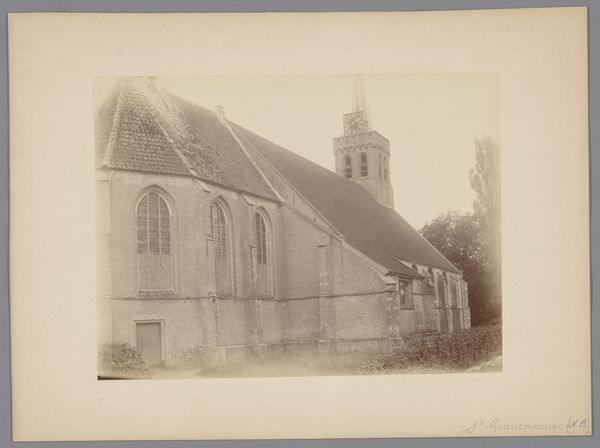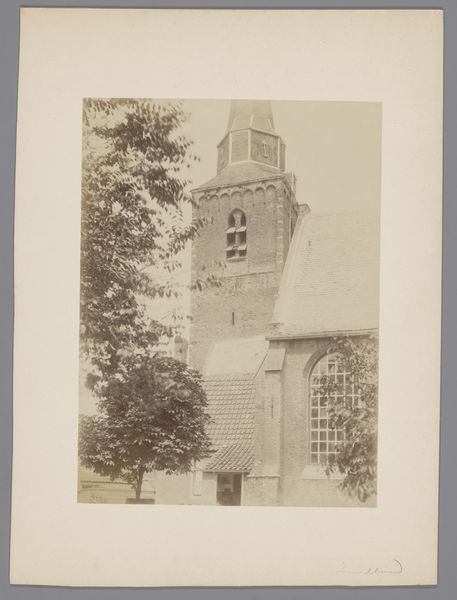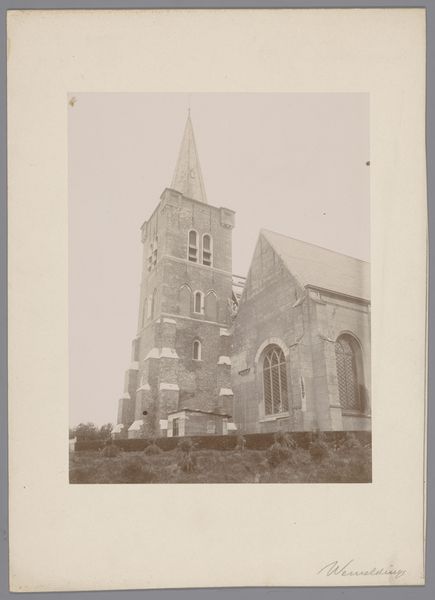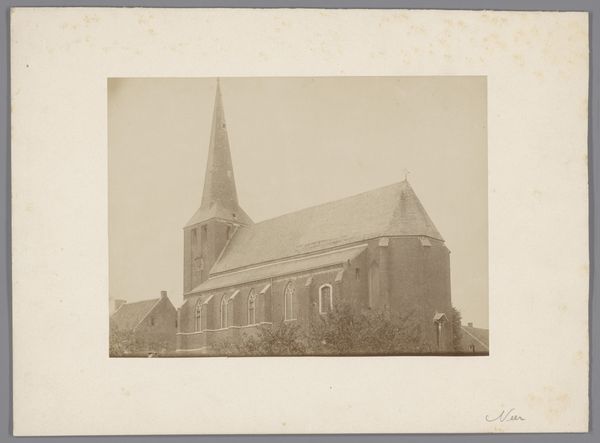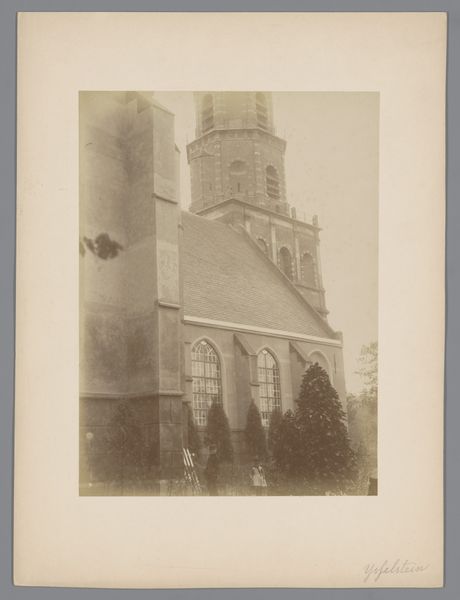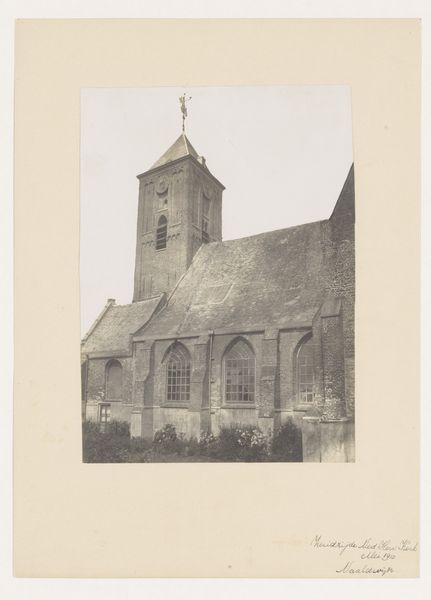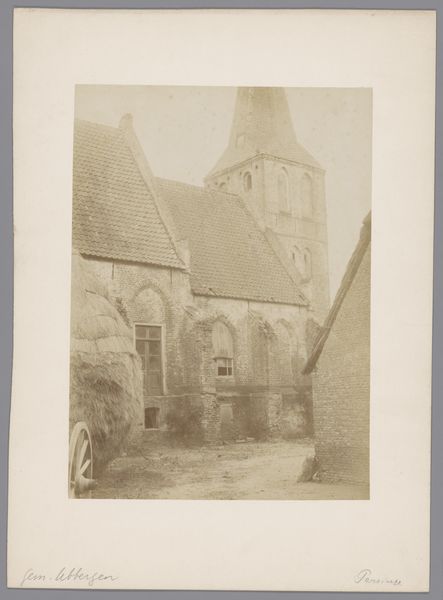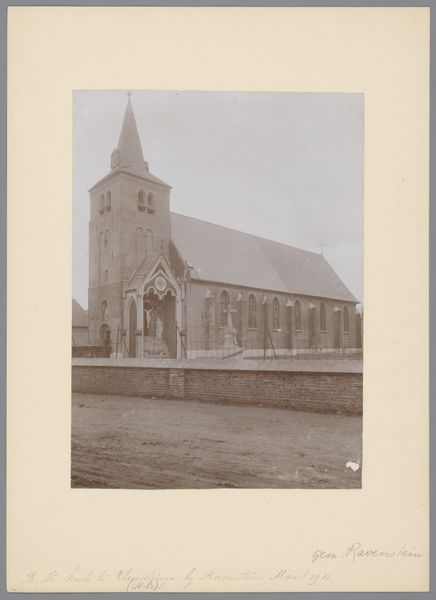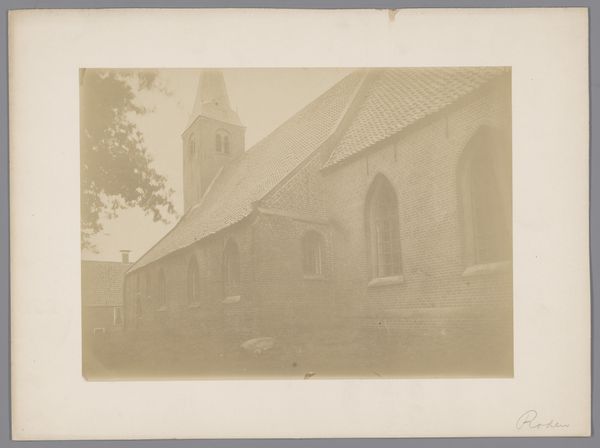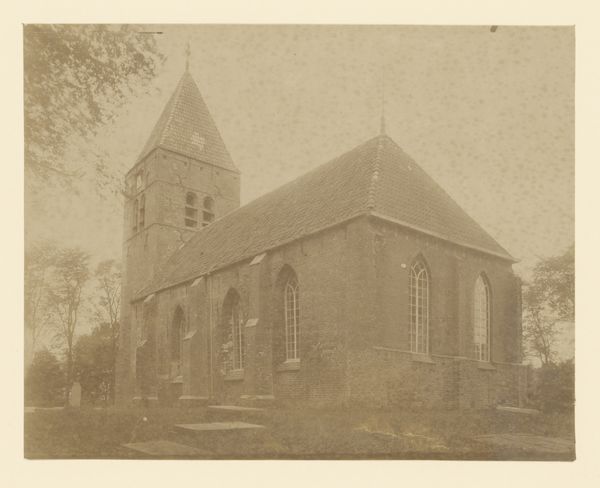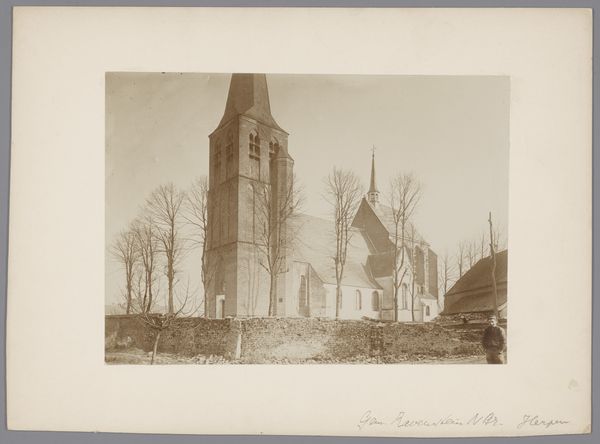
Dimensions: height 229 mm, width 170 mm
Copyright: Rijks Museum: Open Domain
Curator: Here we have an anonymous photograph from 1890, titled "Tower of the Reformed Church at 's Gravenmoer." Editor: The composition is stark. The tower looms, rendered in a muted sepia that gives it an aged quality. The way it dominates the frame is pretty striking. Curator: The image provides valuable documentation of the architectural and religious landscape of the time. The Reformed Church held a specific place within the Dutch socio-political structure, reflecting the aftermath of the Reformation and the shaping of communal identities. Editor: Absolutely. And consider the material presence of those bricks! Each one individually made, laid by hand, a testament to human labor and community investment. The repetitive pattern also speaks to a kind of industrializing process of faith. Curator: Precisely, but think about what it stood for; the construction itself was often as much a social statement as a functional one. The tower becomes a physical embodiment of faith's strength and presence within the village. Editor: A pretty heavy thing to lay on some bricks, huh? The material contrasts--rough brick, smooth steeple--also gives it that austere sense of Protestantism. No frills, just function. I can't imagine the work behind getting that spire up in the air like that. Curator: And its visibility. A literal high point in village life—physically and ideologically—governing space as well as belief. One wonders about the decisions within the local religious infrastructure behind such an image to share it to a bigger public. Editor: Seeing that materiality helps avoid romanticizing the scene. Churches are also built, like any structure: human actions and investments leave tangible marks and power. The steeple even looks like it's been through the elements already. Curator: Thank you; a very worthwhile analysis. It brings depth to what appears at first as a simple, somewhat austere, architectural document. Editor: Glad to share my view on that one; it is incredible how buildings like these remain in a complex negotiation of time.
Comments
No comments
Be the first to comment and join the conversation on the ultimate creative platform.
